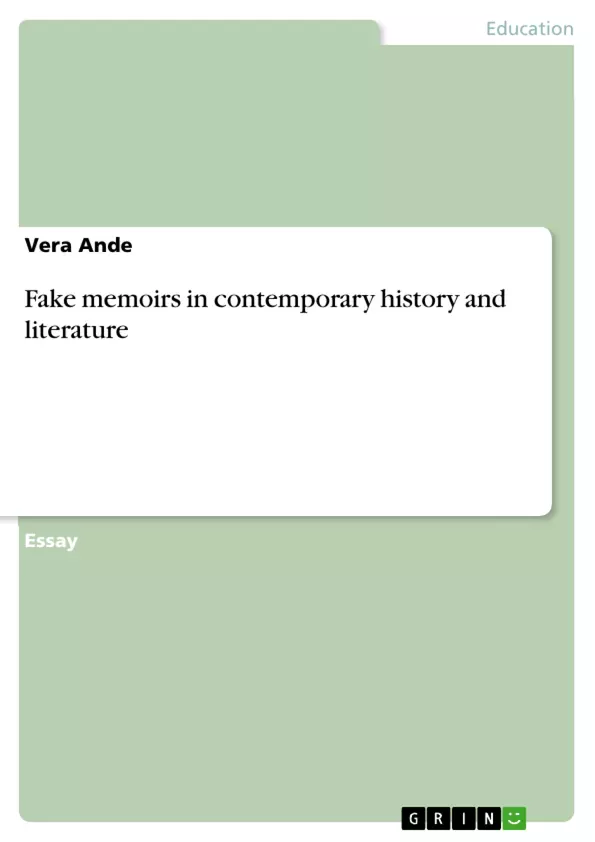In this essay, I am going to talk about memoirs. But what if a memoir is a fake one and the described events have actually never taken place in real life? To make the matters worse – how should one evaluate a piece of writing claimed to be a memoir which received appreciation, various prizes and rewards, and then was declared a fake bringing fame and shame to its author? The central question of this work becomes the role of memoirs announced and proved fabricated, both in the historical methodology and literature.
When it comes to memoirs, the word memoir is derived from Anglo-French memorie ‘note, memorandum, something written to be kept in mind’, which is special in itself – writers of memoirs are usually those persons who either have played roles in, or have been close observers of, particular historical events and whose main purpose is to describe or interpret the events, not their personas from the inside. The condition of remembering and non-forgetting is of importance here; the word in itself suggests that if an event should be not only written down but also remembered, it might play a role for future generations, whether in broad or narrow sense.
Inhaltsverzeichnis (Table of Contents)
- Introduction
- PART I Opening the veil of fake memoirs
- Motives for writing imaginary/embellished memoirs illustrated by the example of Binjamin Wilkomirski.
- Considering the case of Binjamin Wilkomirski.
- Invented memories: the most important source of imaginary/embellished memoirs
- Part II. "True" and fake memoirs in comparison
- Similarities between "true" and fake memoirs.
- Development of memoirs.
- Copyright of experiences and emotions
- Part III The role of fake memoirs: negative or positive?
- Conclusion
Zielsetzung und Themenschwerpunkte (Objectives and Key Themes)
This essay investigates the role of fabricated memoirs in contemporary history and literature, focusing on the case of Binjamin Wilkomirski. It aims to challenge the prevailing neglect of fake memoirs, arguing that they can significantly impact historical methodology, literary studies, and psychoanalysis.
- The motives behind the creation of fake memoirs.
- The psychological processes involved in constructing false memories.
- The similarities and differences between "true" and fake memoirs.
- The impact of fake memoirs on historical methodology and literature.
- The concept of "copyright of experiences and emotions."
Zusammenfassung der Kapitel (Chapter Summaries)
The introduction distinguishes between autobiography and memoir, highlighting the importance of remembering and non-forgetting in memoirs. The essay then raises the question of the role of fabricated memoirs in both historical methodology and literature, using the case of Binjamin Wilkomirski as a central example.
Part I delves into the motives behind fake memoirs, exploring the psychological factors that contribute to their creation. The case of Binjamin Wilkomirski is examined in detail, with particular focus on the False Memory Syndrome (FMS) and its role in constructing false memories.
Part II compares "true" and fake memoirs, highlighting their similarities and differences in terms of historical methodology and literary theory. This section also explores the concept of "copyright of experiences and emotions" and its implications for fake memoirists.
Schlüsselwörter (Keywords)
This essay explores the key themes of fake memoirs, memory, historical methodology, literary studies, psychoanalysis, the False Memory Syndrome, copyright of experiences, and the case of Binjamin Wilkomirski.
- Quote paper
- Vera Ande (Author), 2015, Fake memoirs in contemporary history and literature, Munich, GRIN Verlag, https://www.grin.com/document/341320



